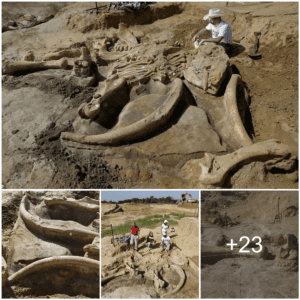In ancient Rome, societal norms dictated that any form of luxurious decoration, whether personal or otherwise, be linked to an excessive and morally questionable lifestyle. Despite this, documented parallels between decoration and identity reveal that only conservative Roman citizens in socio-political centers avoided decorative adornment. Others relegated their decorative preferences to rural areas to avoid being labeled ostentatious, vulgar, or excessive.
According to Pliny the Elder’s written histories, women in first-century Rome adorned themselves with gold jewelry to signal personal identity, similar to elite men who wore insignia. Gold rings, bracelets, fibula garment fasteners, and bulla necklaces symbolizing personal or familial military rank constructed socially recognizable identities and status for the wearer.
Pliny sarcastically compares the golden foot and leg ornaments worn by youthful male attendants at the Roman baths to those worn as insignia by women of the merchant class, whom he ridicules. By creating jewelry as their own female insignia that accentuated and defined the real estate of their bodies, women communicated their identity and compensated for their inability to access political and military adornments.
Offering an excellent, intact example of how Roman women used jewelry is Oplontis, an archaeological site consisting of two buildings on the Bay of Naples in the Campania region of Italy that suffered in the destructive path of the AD 79 eruption of Vesuvius. Focusing on one preserved woman, skeleton 27, from the building called Oplontis B, it is argued that her worn jewelry can be read not as an extra, arbitrary display of wealth done for the love of ornamentation, but rather as female insignia conveying her personal identity as an upper-middle-class matron, as supported by the archaeological record.
Etymologically, the term “luxury” originates from the Latin word “luxus,” alternatively “luxuria,” denoting something overextended, in excess, and thus indulgence, extravagance, and opulence. “Luxuria,” in turn, is a derivative of the verb “luctor,” meaning to dislocate or sprain. Signifying a dislocation of resources for indulgent extravagances extending beyond the realm of necessity, “luxuria” is generally considered a pejorative term with feminine connotations relating to personal restraint or morality when used by ancient sources.
As a cultural construction, “luxuria” often appears as the centerpiece in debates on decadence and morality, with conservative Romans decrying luxurious objects or lifestyles as the source of moral decay. As a social mechanism of hierarchy, the expression of Roman luxury during the era of Imperial expansion was equally driven by the aspirations of a steadily growing merchant class to obtain the appearance of higher status through mimicry of the elite class and anxieties about the ability to visually maintain one’s status by artificially constructing distance from one’s perceived social inferiors. As a signifier of status, then, luxury was not limited to the elite but available to whoever could afford it.
Returning to the site, Oplontis B is the only known building of its type in the Campanian region (fig. 1). A two-story structure with a colonnaded central courtyard, Oplontis B contains archaeological evidence of domestic wares, shipping amphorae used to contain bulk items including wine and olive oil, coinage, and a large strongbox that together suggest a thriving economic industry. When these discoveries are paired with the modest painted decoration found in some of the second-story rooms, it is possible to determine that Oplontis B was a utilitarian space that functioned as a commercial center, or emporium, on the ground level with apartments located upstairs for proximal convenience to the merchandise and activities below.
Figure 1: Interior courtyard view featuring the two-story colonnade, Oplontis B. (Photo: Copyright the Ministry of Cultural Heritage and the Archaeological Park of Pompeii).
Figure 2: Exterior of sea-facing storage rooms, including room 10, Oplontis B. (Photo: Copyright the Ministry of Cultural Heritage and the Archaeological Park of Pompeii).
Along the south side of Oplontis B are eight storage rooms that open onto a sea-facing portico (fig. 2). Although no longer so because volcanic ash and debris have backfilled the bay, Oplontis B would have been only a few meters from the sea, and ships would have exchanged goods from docks placed beyond the portico. During early excavations of the downstairs, archaeologists found fifty-four skeletons preserved by ash inside one of the sea-facing storerooms—room 10. It is assumed locals congregated here during the eruption to await rescue ships that never came (fig. 3). Scientific testing, density of skeletons, and accompanying preserved items demonstrate that those nearest the sea doors were the most affluent of the group. Although it is unclear whether the more prosperous individuals in room 10 were the owners of Oplontis B, emporium merchants, lived upstairs, or came from the surrounding area, we know that they were not resident elites from the luxury villa (Oplontis A) as it was uninhabited for renovations during the eruption.
**Figure 3:** Skeletons remaining in situ near the rear of room 10, Oplontis B. (Photo: Copyright the Ministry of Cultural Heritage and the Archaeological Park of Pompeii).
When reconstructing identity from the archaeological record, worn items are most relevant, as the close object-to-body relationship can disclose significant information about the owner. Considering the various cost and quality of worn items found on the affluent female skeletons of Oplontis B suggests women of moderately high socio-economic status who wished to convey to others a prosperous social identity. As Ward has argued in her discussion of the worn and carried objects found with the female skeletons at Oplontis B, “Wealth, age, sex, social status, marital status, occupation, gender identity as well as physical beauty are all attributes of personal identity, which in the Roman period were often created and displayed by means of jewelry.” Therefore, by analyzing the jewelry worn by one of the female skeletons, skeleton 27, as a visual reconstruction of the woman’s personal identity, I find the jewelry reveals a purposeful display of female insignia donned to instruct observers to acknowledge her elevated social status.
Aged between twenty and twenty-five years old, skeleton 27’s remains were mixed with that of a late-term fetus, skeleton 27a. Heeding Roman socio-cultural expectations, the woman was probably married, allowing us to consider her jewelry as potentially befitting the ideal Roman matron (fig. 4). On her left arm, skeleton 27 wore a gold sheet bracelet embossed with the image of Venus Pompeiana, the patron deity and protector of Pompeii, as identified by her attribute of an upturned rudder (figs. 5). The bracelet is exceptional in quality or worth, and the gold sheet has been rolled to give the illusion of solid casting. Venus Pompeiana appears offset by an oval-shaped knurled ridge at the widest point of the bracelet, wearing a diadem and traditional Roman chiton, a long, dress-like garment fastened at the shoulders and tied at the waist. In her right hand, she holds a branch, olive or myrtle, and in her left is a thyrsus—the pine cone-tipped staff symbolizing fertility and pleasure in the cult of Dionysus, the god of wine, theatre, and ritual madness or ecstasy. To the right of Venus Pompeiana, the winged cupid, her son, holds up a mirror. Combined, the iconography of the bracelet could infer various identities for skeleton 27. However, the bracelet’s potential is limited by its inferior quality, making it most likely either a talismanic item from her past worn to reflect pride in her coastal home near Pompeii, or a locally made item that was easily acquired. Assuming the latter is true, I suggest that the iconography of the thyrsus and Venus Pompeiana signifies that the wearer was a local woman of fertile age and impending motherhood. When associated with Pompeii’s patron deity, the Dionysian attribute communicates the woman is able to bear a city of children; borrowing the protective quality of Venus Pompeiana, the wearer will fiercely protect those children. Both fertility and protection are qualities necessarily demanded of the ideal Roman matron, and the addition of an actual mirror held by a child in the bracelet’s relief signals to observers not to miss these reflected traits.
Skeleton 27 in situ. Visible are the woman’s gold catena, gold arm bracelet, and various items she carried, room 10, Oplontis B. (Photo: Copyright the Ministry of Cultural Heritage and the Archaeological Park of Pompeii).
Figure 5: Bracelet with relief of Venus Pompeiana from the left arm of skeleton 27, room 10, Oplontis B. Gold. Diameter 7.8 cm; bezel: H. 1.9 cm, W. 1.4 cm. National Archaeological Museum of Naples, inv. 73401. (Photo: Copyright the Ministry of Cultural Heritage and the Archaeological Park of Pompeii)
**Around her neck,** skeleton 27 adorned a *catena*, or body chain, consisting of four long segments traditionally worn over the shoulders and under the arms, with the ends connecting at bosses positioned at the center chest and back (fig. 6). The careful crafting of her catena from delicate gold wire, the precise attachment of chains to the gold bosses, and the fine granulation detail atop each boss indicate its high cost and quality. Frequently represented in domestic decoration, the catena is often seen on Venus’s nude body when she is the quintessential goddess of love and beauty, emphasizing her desirable and lust-worthy aspects.
When in her matronly iteration of Venus Genetrix, the propagator of the elite Roman bloodline, the catena is removed—occasionally adopted by Cupid—and Venus wears a necklace. In this manner, skeleton 27’s possession of the catena and its current use as a necklace not only connects her to Venus in the viewer’s eye but is reflective of the goddess’s mutability. As the catena is of remarkably higher quality and cost than the bracelet skeleton 27 wore, I propose it was a betrothal or wedding gift from her husband, who possibly earned his wealth as one of the commercial merchants operating out of Oplontis B, if he was not the owner of the entire emporium complex.
In this scenario, the original intention would be to encase his bride in Venus’s body chain, symbolizing ardor and sensuality. However, now that she is pregnant with a child who will continue the family’s bloodline, the catena’s use as a necklace shows the woman’s grace and decorum through its association as the necklace attribute of Venus Genetrix.
**Figure 6. Chain Catena Necklace** worn by skeleton 27, room 10, Oplontis B. Gold. Museo Archeologico Nazionale di Napoli, inv. 73410. (Photo: copyright the Ministero dei beni e delle attività culturali e del Turismo – Parco Archeologico di Pompei).
As insignia, female jewelry connoted culturally sanctioned virtue and value upon the adorned body, thus alleviating conservative male criticisms about excessive feminine desires and associated anxieties surrounding the corrupting allure of extravagance, or the women who partook in its expression. While skeleton 27 wore jewelry of various cost, quality, and craftsmanship, when compared to ancient sources, I find each piece can be seen in light of female insignia where its use functioned to enhance and reflect her personal and social identities.
According to Andrew Wallace-Hadrill, “luxurious display[s] of wealth added to the appearance of power and raised the stock of reputation, so increasing actual social power” in the apparent hierarchy of Roman society. Therefore, by her choice of jewelry, skeleton 27 neither fought nor ignored socio-cultural stigmas towards the extravagant nature of luxury. Rather, she displayed a carefully crafted version of self that could communicate her identity within the culturally conditioned parameters of Roman adornment.





